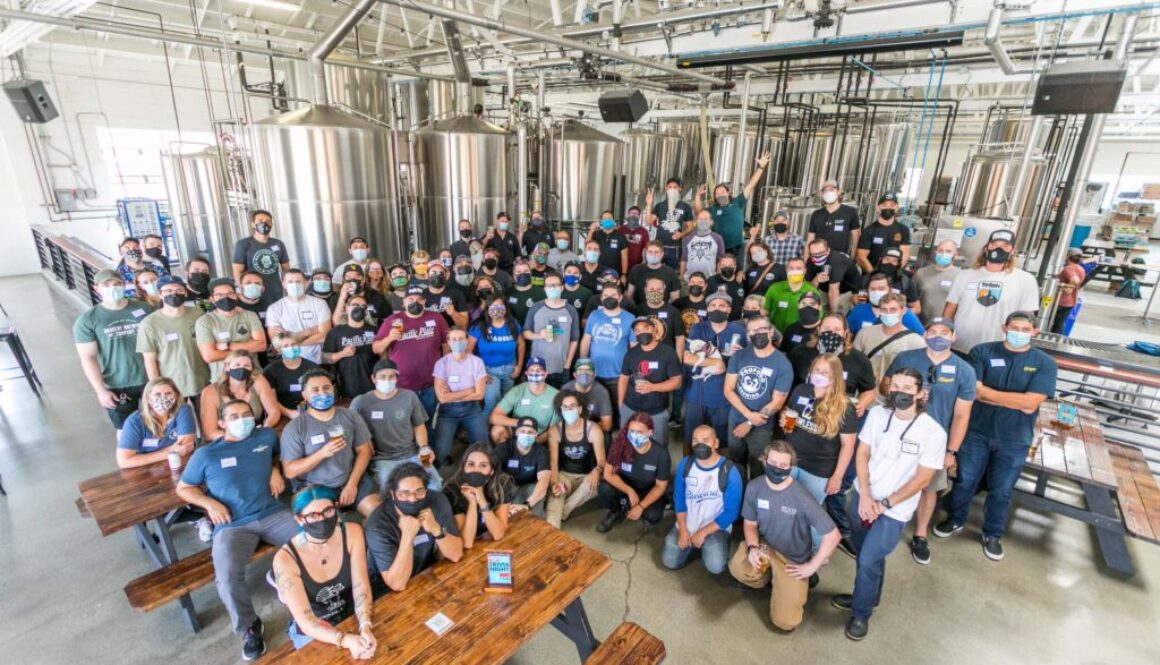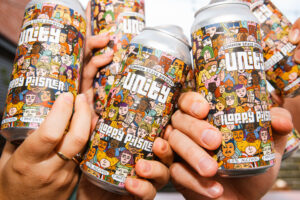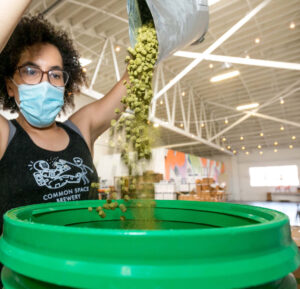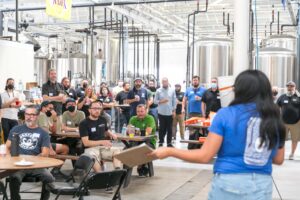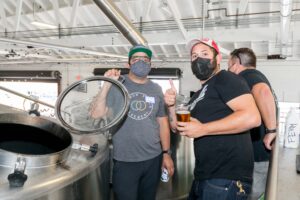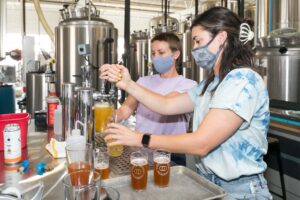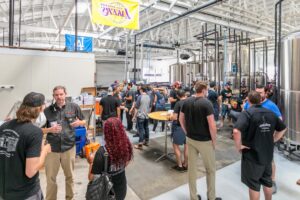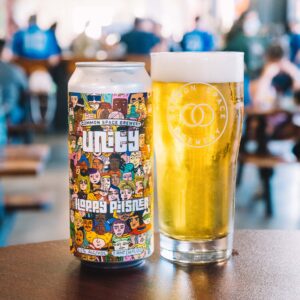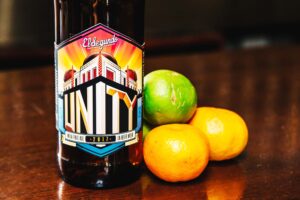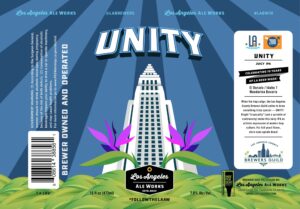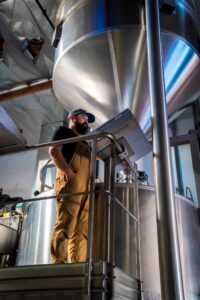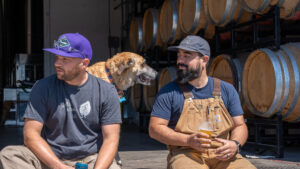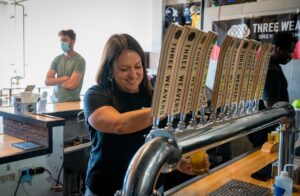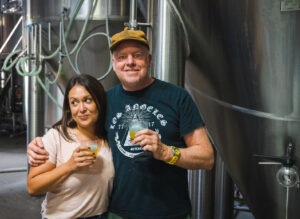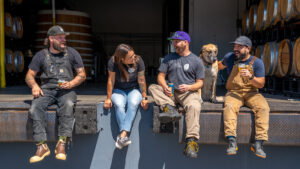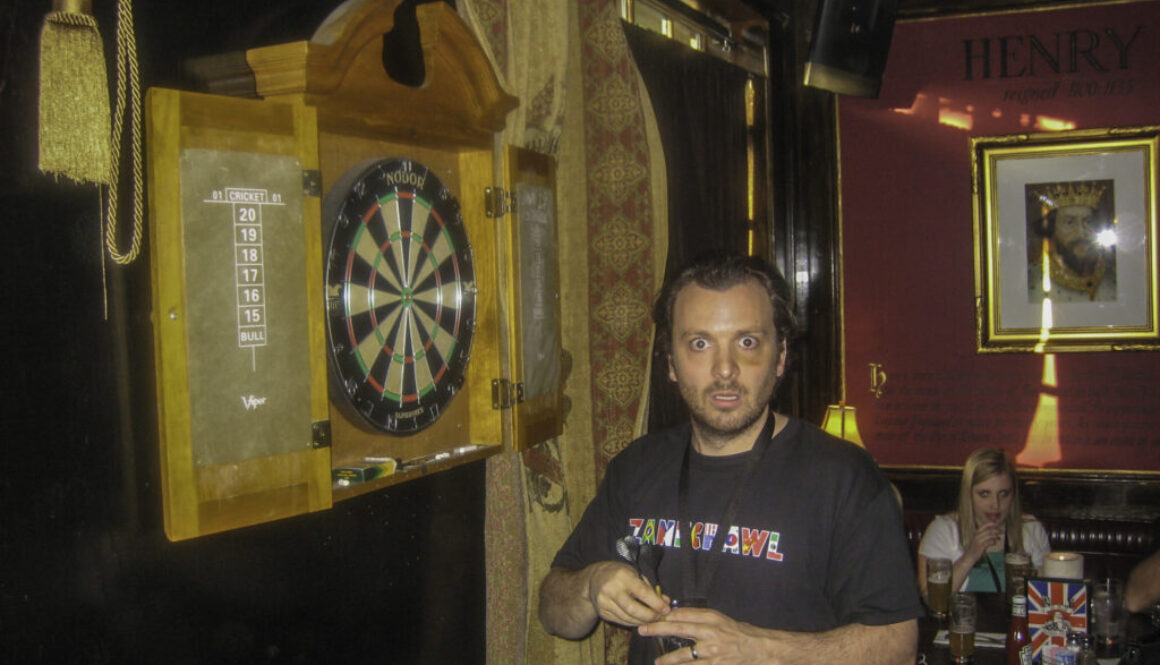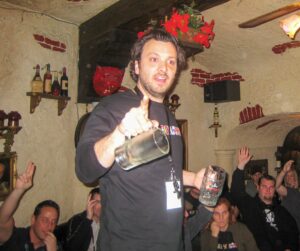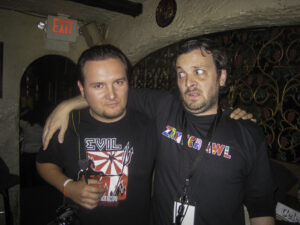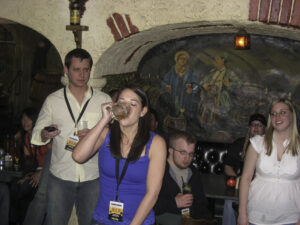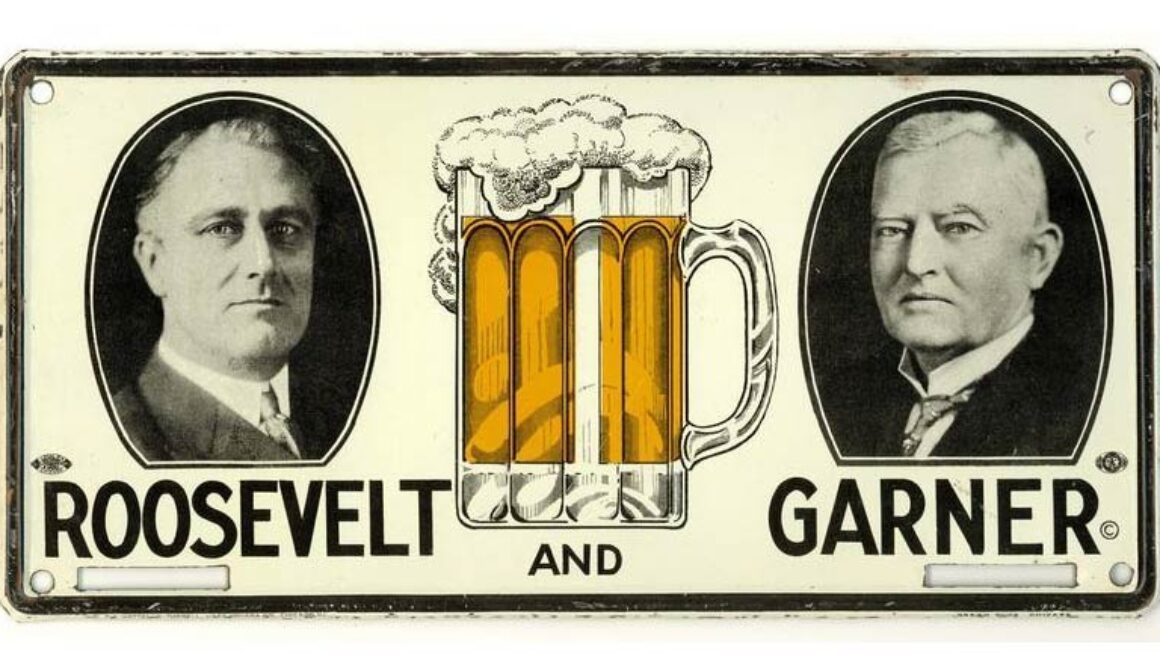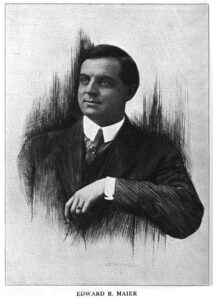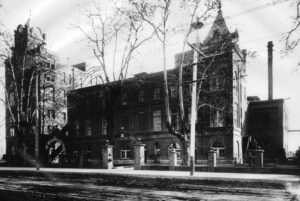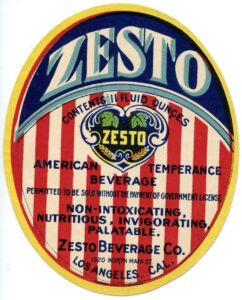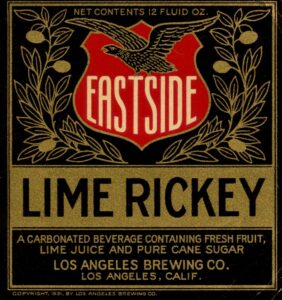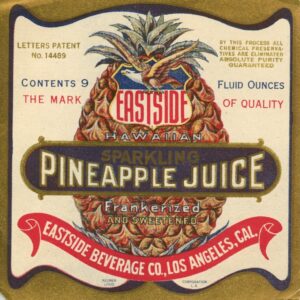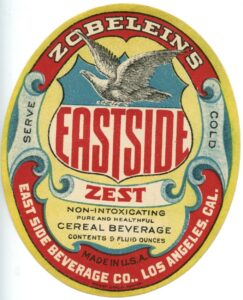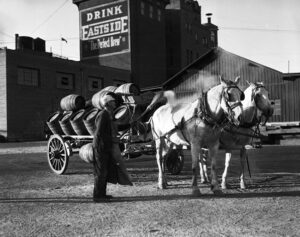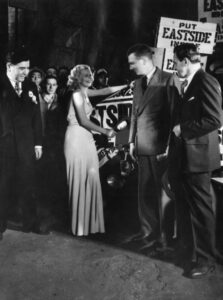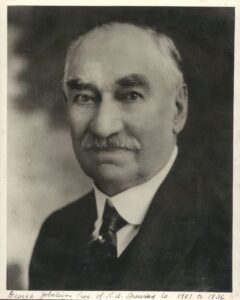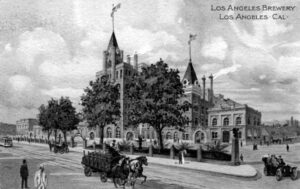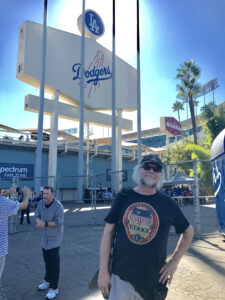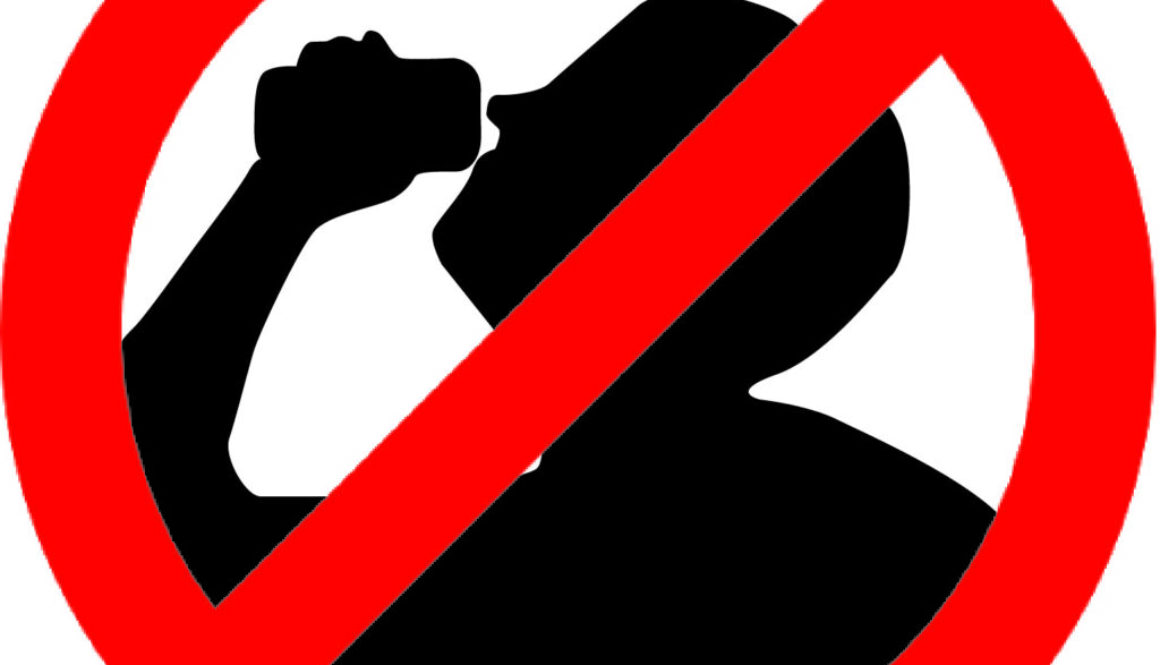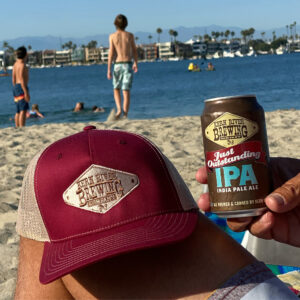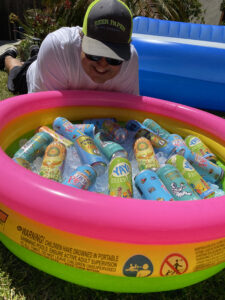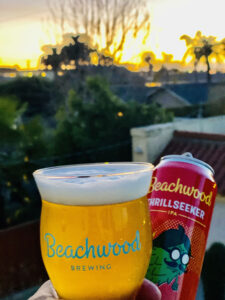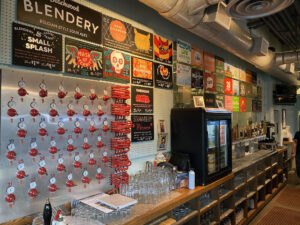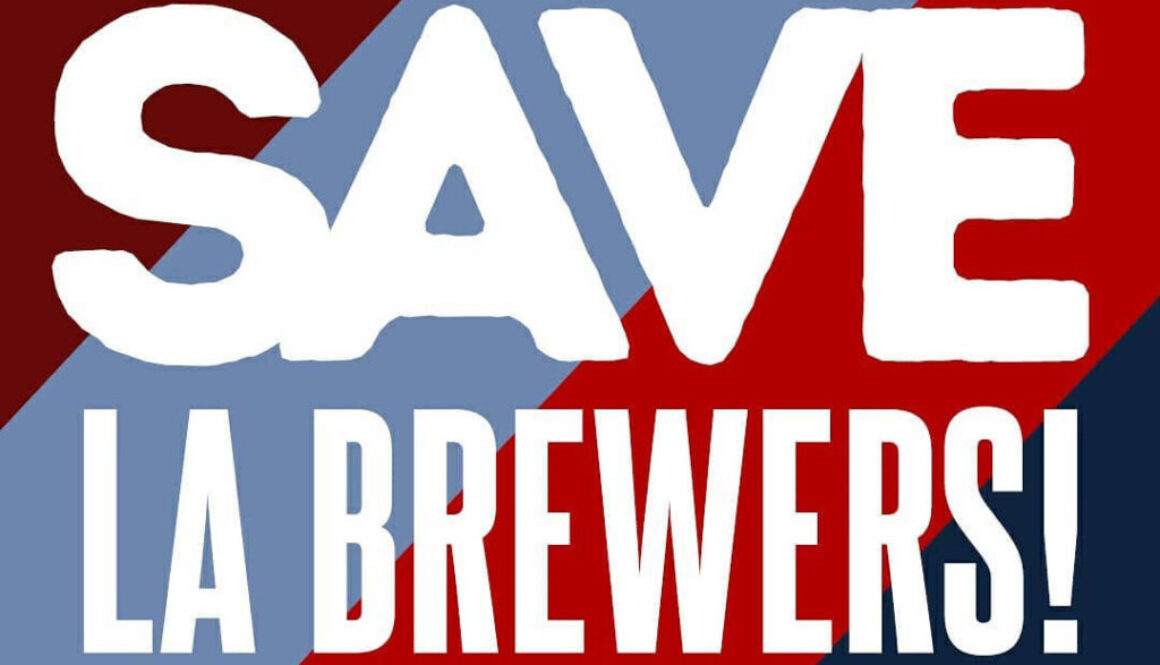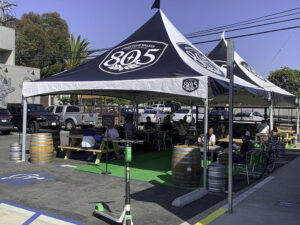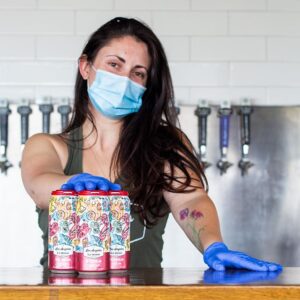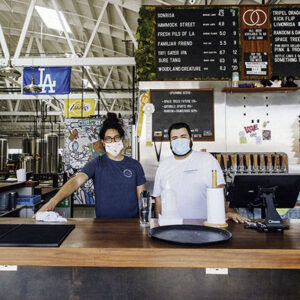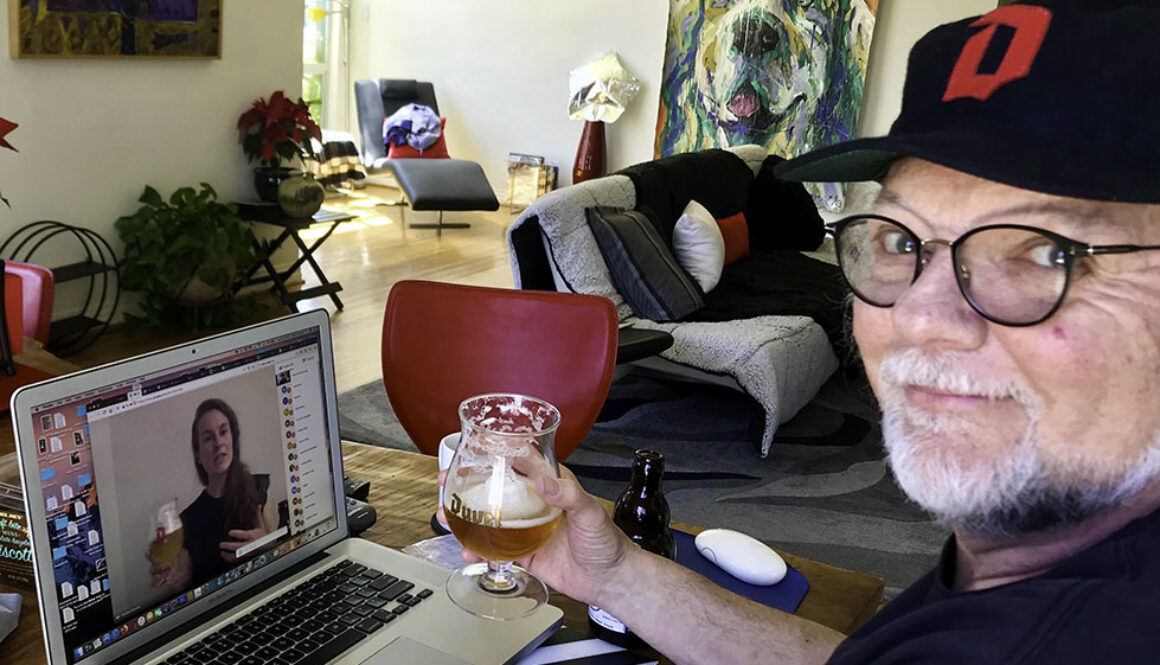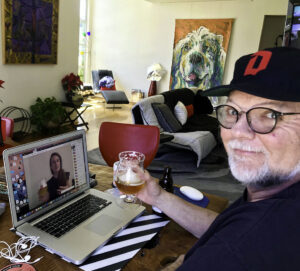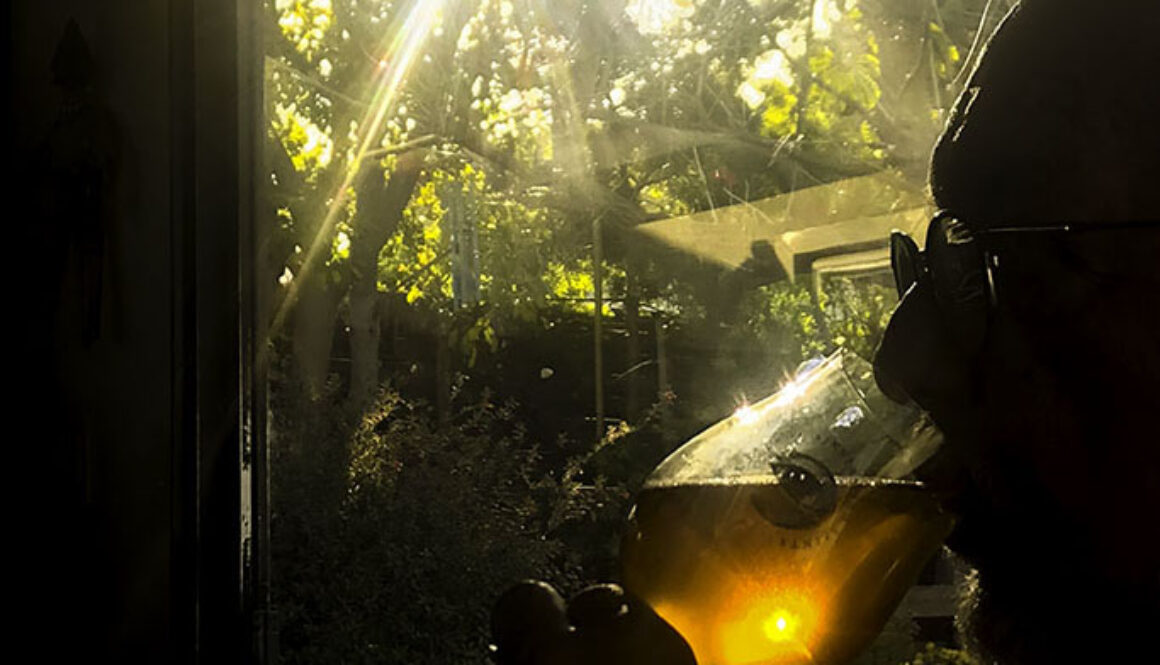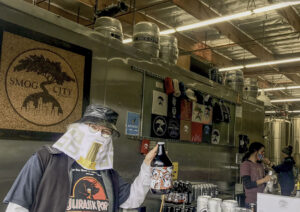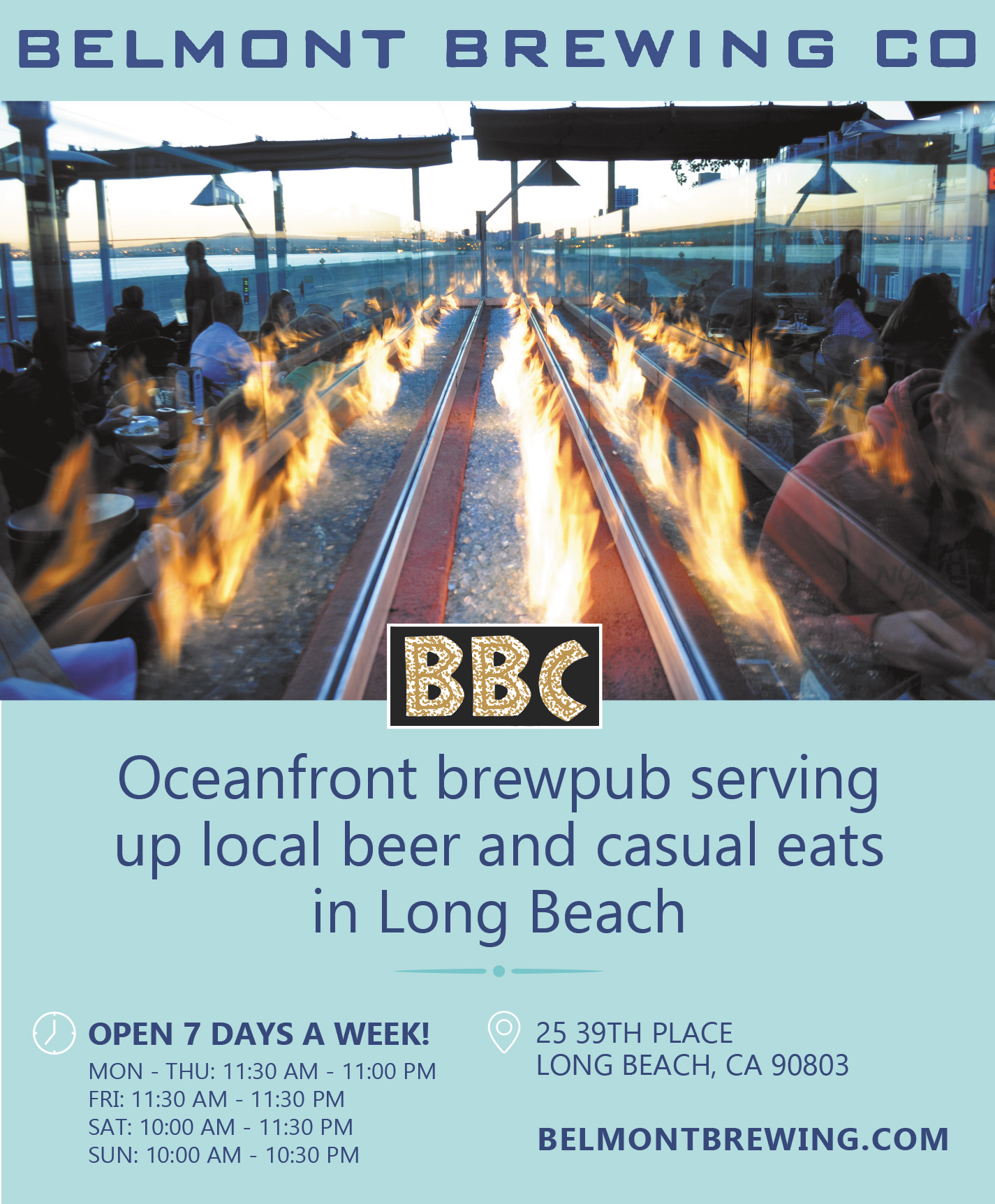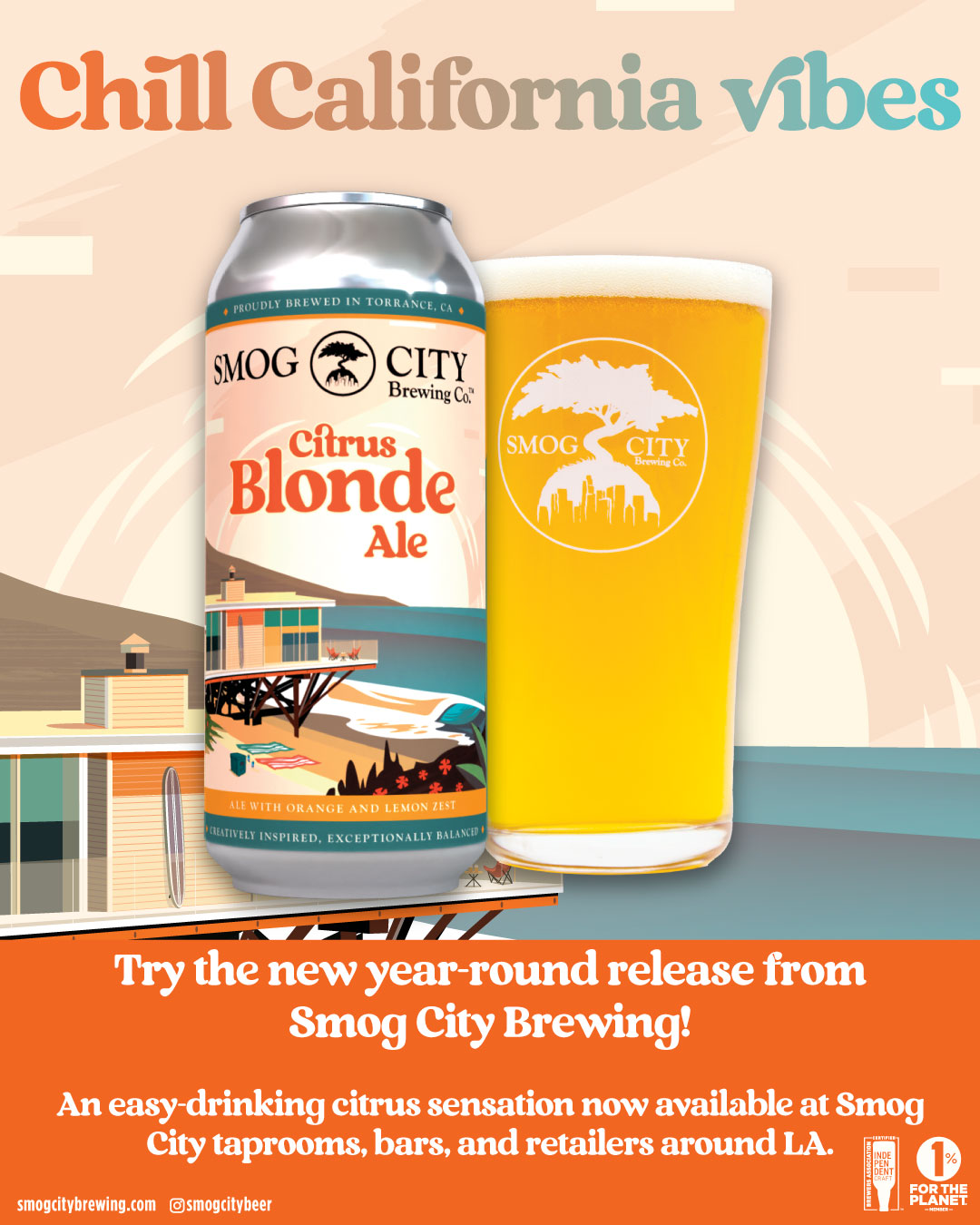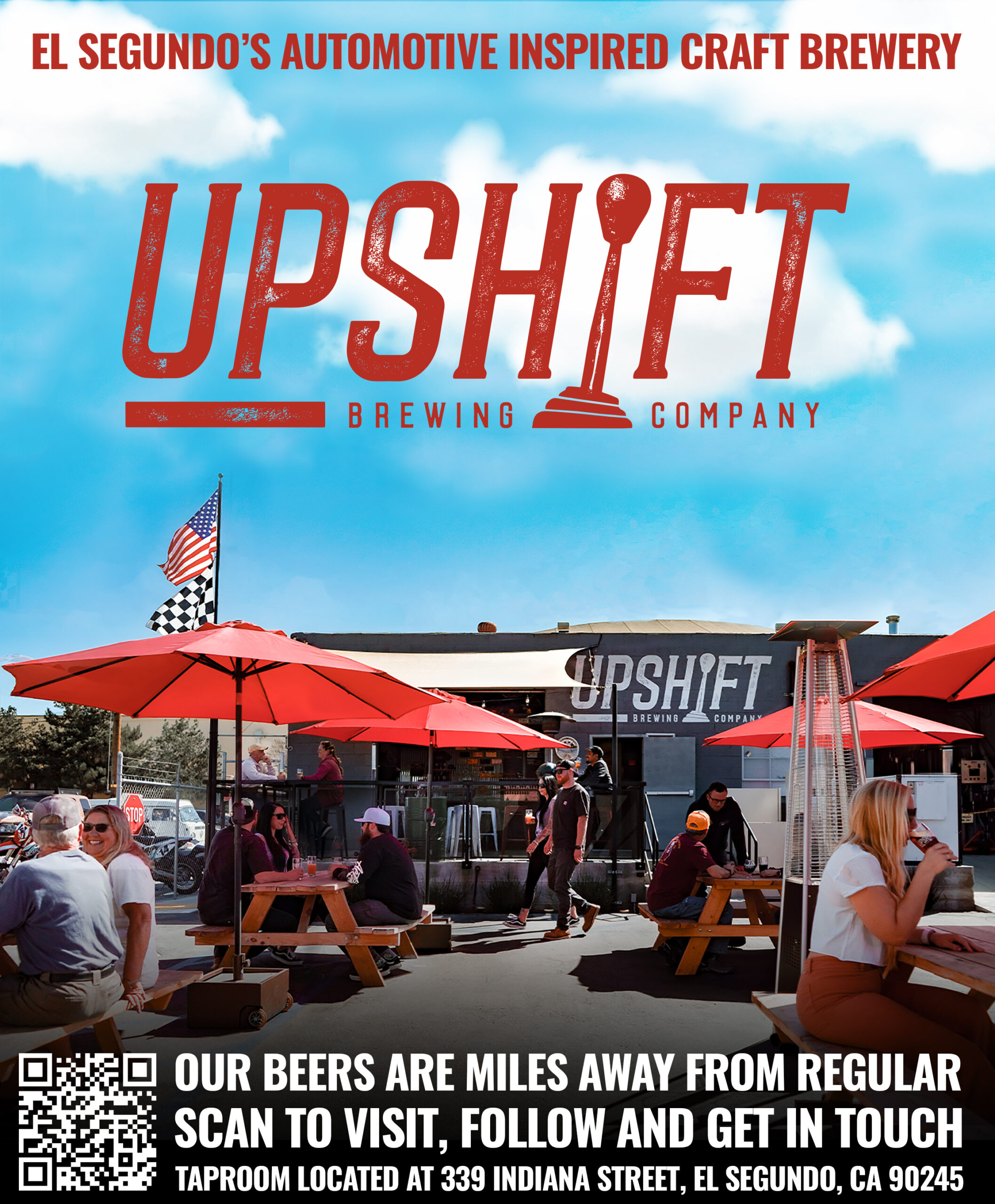VINNIE
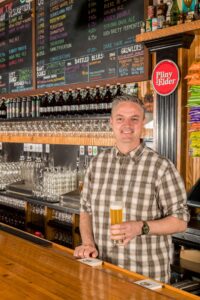
All Photos Courtesy of Russian River Brewing Company
Vinnie Cilurzo. Often described in glowing terms like “brilliant brewer, the nicest guy in the business and a damn fine washoe player,” I’m lucky enough to call him a great friend and someone who has been with me on my own brewing journey which now eclipses 25 years. He’s part of the single name club and truly the one and only Vinnie you need to know if you want to KNOW what great beer tastes like.
When asked to interview Vinnie for Beer Paper, I thought, what is it about my longtime friend that you don’t know? As one of the most famous and recognizable brewers in the world, it’s clear that one day he’ll have his own star on the brewing walk of fame. There’s nothing he hasn’t accomplished and doubtful there is anything more he could do to prove his largeness. It also feels that nearly everything has been written about him already!
But as someone who has been lucky enough to share copious pints of Blind Pig, travel half away around the world with him and work collaboratively on some incredible beers, I must confess, I probably have pinched myself more than a few times wondering how the hell did these opportunities come to fruition? It’s kind of like an out of body experience, “That’s Vinnie Frigging Cilurzo sitting there and, you know, we’re just chewing the fat on what makes Simcoe hops so great.”
So how did two guys from Southern California gravitate towards a shared path of awesome beer? In short, I think it’s a strong sense of being cut from a similar cloth. Vinnie grew up in Temecula, CA, about 60 miles north of San Diego where I grew up. Neither of these cities was a shining beacon for craft beer in the early 1990s. We entered into the business a couple of years apart with both of us being very young and enthusiastic brewers eager to find our paths.
More often than not, these paths shared parallel trajectories. Often, we would catch up at beer festivals including the Great American Beer Festival where our booths were typically in the same aisle. Many of our earliest conversations centered on sour beer production methods and things each of us were doing. As he was carving out his brewing niche in Northern California, I was doing much the same in Southern California. So, in many ways we were sounding boards for each other at a time when little documentation was available to brewers who wished to attempt this style of brewing.
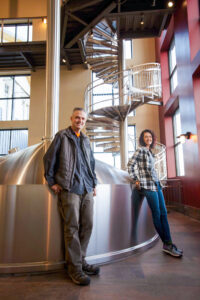
All Photos Courtesy of Russian River Brewing Company
In 2003, the Great American Beer Festival awarded the very first Double IPA medals. In a stroke of fate from the brewing Gods, Vinnie and I shared the stage that day as two of the first to medal in what now has become one of the most hotly contested categories. It was a moment I will never forget.
While during the earliest parts of our careers, we focused on how to be better brewers, nowadays, it feels like more of our conversations center around how to be great business owners in the great state of California. Casual conversations over Gin and Tonics have become a bit more plentiful of late. His love for The Botanist means it’s always easy to get him to stay for just one more.
Over the years, we’ve shared our passion for making the best beers possible. Sure, we’ve aged a bit and there’s more salt than pepper in the little hair we still have. But 25 years later, I’m proud to say he’s always made me a better brewer and for that I am thankful to have made his acquaintance and that I am certain we will continue to find time to sit down and discuss the world of beer in meaningful ways.
Without further ado, I present my friend Vinnie.
TOMME: You broke into the business in 1993? At the time there was very little craft beer and location wise it was another challenge. Blind Pig has been well documented so let’s talk about the way it felt to be so young, newly married and running a business.
VINNNIE: It was actually 1994 when we opened Blind Pig Brewery in Temecula, at the time there were only three micro-breweries in San Diego County and a handful north of Temecula. Despite the 80+ hour weeks, those were exciting times, I was young and full of energy so the long days were not an issue. I think more than anything I was making the beers I wanted to drink and we had to figure out how to sell a hoppy Golden Ale and an IPA.
TOMME: Leaving Blind Pig you moved to Korbel and were given the chance to build Russian River from the ground up. As someone who got the same opportunity with The Lost Abbey, I know what that is like. Is there a moment from Korbel when you felt like perhaps you transitioned and you knew you could really make a full career out of this?
VINNIE: It was late 1996 when I left Blind Pig and spring of 1997 when Korbel hired me to run their new brewery, Russian River Brewing Company. Initially one of the winemakers was overseeing the brewery operation and we made a Golden Wheat Ale, Pale Ale, Amber Ale, and Porter. Less than a year later Korbel gave me full reign of the operation and I switched up the line-up of beers including dropping the Amber Ale and switching it to an IPA, which at the time there were still very few IPAs available. It was about that time that I knew that RRBC would be a success and that Korbel had the confidence in me to run their small brewery.
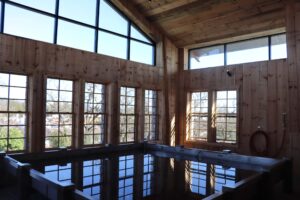
TOMME: There was a point when Korbel offered you the opportunity to take full stewardship of the Russian River Brewing brand. Given that Natalie (your wife) had a successful career in the wine world, it clearly was a monumental jump to dive head first into owning a brewery together. From the outside looking in, you both seemed to make it look effortless. Care to share the secret sauce (other than sharing great Pinot Noirs)?
VINNIE: It was April 1, 2002 when my boss at Korbel called me to his office to tell me they had officially decided to close the brewery. Yes, it was April Fool’s Day so I did have to ask, “you’re joking, right?” In truth this was a discussion that had been going on for a few months which I was involved with. In the end they decided to close the brewery but I was able to trade my severance package for the RRBC name as well as our other beer brand names such as Damnation and Pliny the Elder. A year later in 2003, I officially left Korbel. During that year, Natalie and I wrote a business plan and found 30 investors to fund RRBC version 2.0. When we opened the brewpub in Santa Rosa in April 2004, Natalie officially joined the brewery and left the wine industry. I think the key to us being both married and business partners is the fact that our jobs within RRBC and our skill sets are totally different. There are certainly duties within our business that we have cross over in, but in general, we do completely different jobs. One thing for sure is we try to get away from is the day to day of the brewery so we can think big picture for our business. These are often business trips, but it still gives us a chance to remove ourselves from the day to day. This reminds me of the old saying, “it is the difference between working at your business or on your business.”
TOMME: Do you even remember what it was like before Double IPA was a thing? Given that Pliny the Elder continues to be an amazing example, you should probably talk about the path to bring Pliny to people and at the same time all of the process improvements you’d made. I doubt many people even know how hard your team has worked on this beer and Blind Pig in particular.

VINNIE: We have been making PTE since 1999, so it was first brewed when we were at Korbel. But it was in 2004 when we opened in Santa Rosa that it became a full-time beer. And it wasn’t until 2008 that it started gaining popularity and by 2010 and beyond its popularity kept growing. Initially we couldn’t even give it away, this was even the case up until 2008. There was a lot of hand selling the beer by way of beer festivals or literally taking a growler or bottle into an account and tasting them on the beer. I would never just leave the sample, I always wanted to taste the PTE sample with the beer buyer. So, there were difficulties on multiple fronts, because it wasn’t just selling a highly hopped beer at a time when the average consumer wasn’t drinking IPA, finding the best ingredients was not as easy as it is today. Keep in mind, there was no Citra, Mosaic, or El Dorado, to name a few of the popular designer hops. Pliny was built around Simcoe and Simcoe was the first private hop variety to really blow up. It didn’t happen overnight, but I loved the citrus, pine, and pungent notes that Simcoe carried. So back in the day the recipe adjustment I was making were mostly ingredient driven. And although we still make small tweaks to the ingredient bill now and then, these days the larger changes are process changes to create more aroma and flavor impact as well as better shelf stability.
TOMME: When you opened on Fourth Street in Santa Rosa, you really established yourselves as Northern California locals and have since really become a massive part of the beer scene. Let’s talk about that and what it has meant to bring Pliny the Younger to so many people?
VINNIE: It is funny to think back to 2004 when we opened the Santa Rosa RRBC brewpub. The very first day we opened it was very busy but, over time, business settled in and we had some pretty dark days when nobody was coming in. I remember one random mid-week day in 2004 or 2005 when nobody came in until 5 pm or so for happy hour. Folks always think of the Santa Rosa brewery being busy, but it has not always been that way. We were an IPA focused brewery and IPAs were not popular yet to the general drinking population. But we stuck with our focus on hoppy (and Belgian and sour barrel aged) beers and in time folks got acclimated to the big hoppy aroma and flavor of our beers. Having a brewpub was very helpful here because our staff could educate the consumer on what they were tasting. Pliny the Younger (PTY) was first made in 2005, but it wasn’t until 2010 that it blew up. Natalie and I never expected PTY to become a cult beer like it has, in fact, we tell our staff every year before the PTY release to remember that this might be the year when folks don’t show up. Natalie and I have a firm belief to run our business with a little paranoia with the idea being that we can always make better beer, food, and give an even better customer experience. This sounds a little contrived but we truly believe it and each year we try to make the PTY experience even better than the last. Walking out and talking to guests in line for PTY is still one of the most humbling things I do each year and Natalie and I try to walk the line at both breweries every day during the release.
TOMME: The Toronado in San Francisco and owner Dave and Jennifer Keene have been huge supporters of you and Natalie. We all have great T-Room stories. Have any to share that you love? (Anniversary blends, Washoes, The Tamale Lady, Paxton Brunches?)
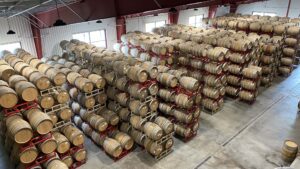
VINNIE: Yes, Toronado (San Francisco) has been a huge part of our success in San Francisco. In San Diego, before Toronado (San Diego) closed this year, Toronado was also a big part of our distribution in SoCal. I remember the first time I took some beer samples for Dave to taste, it was Damnation and HopTime Harvest Ale. Dave keyed in on the HopTime, our wet hop beer which at the time was made using 100% of our own estate hops that we grew on the property of Korbel. Dave loved the HopTime, and while he and I finished the bottle I had brought down, the only thing he asked was, “how many kegs can I purchase?” He never asked how much the kegs cost and that always resonated with me. Dave never cared what the cost was, he only wanted to know how many he could sell. I’ve been to Belgium twice with Dave, one was around Toronado’s 20th anniversary and the second was just before their 25th anniversary. Traveling through Belgium and visiting breweries like Orval and Duvel with Dave are still some of my favorite memories though there are many which include beer blends we have made together as well as many late nights playing Washoes.
TOMME: We have played a game or two of Washoes!
VINNIE: Well, we have you to thank for the introduction of Washoes to the beer industry. My first memory was playing Washoe’s at the Anderson Valley Beer Festival with you, Dave, and many others. We still have boards at our brewery and though we don’t play as much as we use to, it is always a fun and memorable.
TOMME: It’s been over 25 years of being in this business and beer has changed significantly. One thing that has not changed is your fervent desire to improve your beers. As an industry Grey Beard, why is this process of improving so important to you? Clearly, it’s a ton of work.
VINNIE: I love learning. I think this fact as well as what I mentioned earlier about running our business with a little paranoia keeps driving me to make better beer. Another thing that keeps me striving for even higher quality beer is the fact that there is so much competition now, especially in the IPA category. With all this competition, I have to keep improving PTE, Blind Pig, and the rest of our beers. When we built our new(ish) Windsor, CA production brewery, it was an opportunity to add some components to our operations that improve the quality of our beer. We could have easily kept doing what we were doing at our old production facility but Natalie and I really wanted a brewery we could be proud of and develop a unique customer experience which I think we have done with tours that are a very sensory driven experience.
TOMME: The Brewers Association has bestowed two very important awards on you. The 2008 Russell Schehrer Award as well as the 2017 Brewers Association Recognition Award (shared with Natalie). What do these mean to you and talk about the process of giving back to your brewing community and how that feels for you and Russian River.
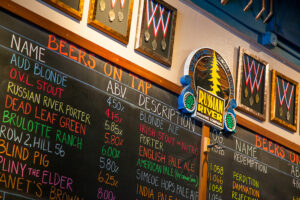
VINNIE: Both awards were very humbling to receive because they are voted on by our peers, especially for the RS Award which is voted on by the past winners. As a young brewer there were far less brewery peers to lean on for advice but there were certainly plenty who helped Natalie and I out. To me it is my obligation to now give back and this is something Natalie and I have done as much as possible.
TOMME: You were an early adopter of barrel aging for sour beer production. Knowing that you love these beers and continue to make them, what have been your experiences with these beers and the uber consumer of late?
VINNIE: This is still one of my favorite parts of our brewery, especially now with all the extra space at the Windsor facility. I mentioned earlier about getting help from peers in the beer industry. Hands down you were my main brewer peer who I communicated with regarding making these types of beers. There were no books, web sites, or podcast on the topic and all you and I had was each other to rely on to bounce ideas off of. I still remember those days like it was yesterday because it was so exciting and, to some degree, you and I were writing the script on how others would produce these beers should they decide to make funky beer. Present day things have really changed and I’m sure you agree, with the popularity of quick sour beers, there are less people drinking old school, barrel aged sour beer. There are also a lot more breweries making these beers which sometimes take years to make. I don’t think the pie has gotten much larger for the consumers that are into these beers and, with more breweries making these beers, we are all competing for the same consumers still into these beers. But the same thing as with our IPAs, I don’t rest on our laurels with our funky beers and I feel like we can continue to improve the quality. One example is at the Windsor facility the barrel room can hold the temperature firmly at 58F which to me is very important when making these beers.
TOMME: Russian River beers have famously come in 500 ml single serve bottles. This wasn’t always the case and now you’re getting into canning runs. What do you see your packaging looking like in the future (cork finish, 500 ml, four-pack, etc.)?
VINNIE: We did six-packs at Blind Pig and at RRBC-Korbel, and one should always learn from their past experiences and mistakes. Natalie and I knew when we re-opened RRBC in Santa Rosa that we would never do six-packs again. I was looking for a single serving size bottle and remembered the two German beer bottles that I saw in Germany many years before. After seeing the two main German bottles I fell in love with, it is the one that we still use today. We now fill them to 17.25 oz, but one of the things I like is that it is basically a pint, so it is around the same size that most Americans purchase a beer in a bar or restaurant. Although we are doing some canning now, we are still firmly a bottle (and keg) brewery with cans being a very small percentage of what we do. The split is probably 95% bottles and 5% cans. For our barrel beers we still use a cork finished bottle. It was many years ago that we switched from a 750ml to a 375ml bottle with the idea being similar to the bottle use for our hoppy beers. I wanted it to be single serving. 750ml of sour/barrel aged beer is too much for one person. Although the industry continues to grow via cans, I’m still firmly a believer in bottles. Though cans have their advantages such as being lighter weight, don’t let light in, and if seamed properly do hold up better if your beer doesn’t sell quickly. But our beer sells quickly and with great packaging equipment a bottle will always have a lower Total Package Oxygen (TPO) compared to a can at packaging, and TPO is a cornerstone of our quality program and for this I like bottles better.
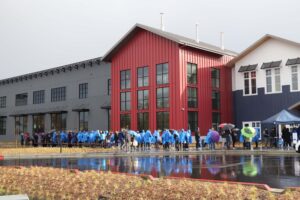
TOMME: What’s your favorite font? (There seem to be all kinds of jokes about Russian River fonts online)
VINNIE: Ha, that is funny!
TOMME: Will there ever be an Isabelle Proximus reunion tour?
VINNIE: Interesting question. I like where Isabelle Proximus sits in the craft beer history book. For those that remember it, the beer holds fond memories and the beer had an exceptional flavor profile. Though I wouldn’t close the door on a reunion brew, there is a side of me that likes to leave it in the past and keep it as a great memory!
TOMME: You built a “brewer’s brewery.” People come from all over the world to see it. Explain what that was like and what else you want to accomplish with that space.
VINNIE: I remember while we were in the design phase, we were nearly debt free. Pliny sales were great, we were at capacity at both our breweries at the time, and in general things were going well. Ken Grossman was a huge help in designing the brewery but I do remember him asking me, “why do you want to build a new brewery and take on all that debt?” I had a simple answer, “because Natalie and I want a brewery we can be proud of!” Ken knew exactly what I meant as he had recently built his dream brewery in North Carolina. Building our dream brewery was an amazing, nerve-racking experience but oh so rewarding. Installing open top fermenters, a German brewhouse, and a Koelschip to name a few things was pretty damn cool. Being able to incorporate all the things I have dreamed of into a brewing facility was a once in a lifetime experience and probably something I wouldn’t want to do again as it probably took a couple years off my life. But I wouldn’t trade it for anything.

TOMME: What makes for a bad day at the office?
VINNIE: I make beer for a living so, in truth, how bad can a day be? Of course, I have a bad day from time to time, but I have to remind myself that it is just beer and, though it brings joy to people which I appreciate, I also don’t take it that serious because after all, and like I said before, it is just beer. I’ve said that in the past and some people have gotten mad at me for saying, “it’s just beer” but there are people in far worse situations even on my worst day in the brewery, so I try to remind myself of this on the occasional bad day.
TOMME: Given the epic list of things you have accomplished is there something not on the list? What point will you be satisfied with your breadth of work?
VINNIE: I don’t know that I will ever be 100% satisfied as there is always work that can be done to make our beer even better. But there is success in our business beyond our beers, for example, our staff. One of the reasons we grew was to be able to take care of our team and let them grow with the company but we had to get bigger to do this. Getting larger also afforded us the opportunity to give our team more benefits which is something we’ve been able to do. To go back to your question, in general I think it goes back to the idea that Natalie and I run the business with a little paranoia which keeps driving us both to do everything better, even if we do it pretty good already.
TOMME: How old do you think you’ll be when you decide to retire from this business?

Port Brewing and The Lost Abbey
Photo Credit: David Johnson
VINNIE: That is a good question. On occasion, Natalie and I joke that we have a brewery for sale, but of course we are just joking. I think the answer to that question falls with Natalie and my comfort level with our team as we continue to move forward. Being able to peel off some of our day-to-day tasks is something that I am working on so I can work on special projects and brew in our 5 bbl RnD brewery more. But at the same time, I will always be involved to some degree in the day to day as will Natalie because we are firm believers that a company needs leaders that can make decisions often quickly with some of them being difficult. These decisions often fall on our shoulders just as they do at Lost Abbey for you. I will say this, I love what I do and I’m not quite ready to retire.
Tomme Arthur is the Co-Founder and Chief Operating Owner for Port Brewing and The Lost Abbey. Located in San Marcos, Tomme and his partners founded this brewery in 2006 before brewing was hip, cool and fun. A veteran of the craft brewing industry since 1996, Tomme has spent the better part of 25 years making the most unique beers he and his team can imagine. With one of the largest barrel collections in Southern California, you never know what they will dream up next. He remembers meeting Vinnie for the first time at the 1996 Great American Beer Festival. He lives in San Marcos, CA with his wife and two daughters. When not working, he enjoys long naps under oak trees, midnight walks on the beach and riding his bike while pedaling for beers.


